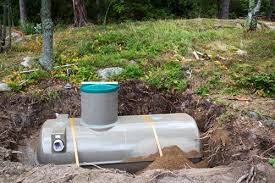
When you own a home with a septic system, maintaining it in optimal condition is essential. Septic tank inspections play a crucial role in this maintenance, as they help ensure the system operates efficiently. But how often should you schedule these inspections? In this blog post, we’ll break down why septic tank inspections are necessary and how frequently they should be done.
Understanding Your Septic Tank System
A septic tank is an underground waste treatment system that processes wastewater from your home. This includes water from toilets, sinks, and washing machines. The septic tank works by separating solids from liquids—solids sink to the bottom, while liquids rise and flow out to a drain field. The bacteria inside the tank break down the solids over time, although periodic pumping may be required.
Without proper maintenance, septic systems can fail, leading to costly repairs, sewage backups, or even environmental contamination. That’s where regular septic tank inspections come in.
How Often Should You Get a Septic Tank Inspection?
While every home is unique, experts recommend having your septic tank inspected every 3 to 5 years. However, several factors can affect this timeline, including:
-
Household Size: The larger your household, the more wastewater your septic system has to process. Larger homes may need more frequent inspections.
-
Septic Tank Size: Smaller septic tanks fill up more quickly, requiring more regular inspections. A professional inspector can help you determine your tank’s size.
-
Water Usage: Homes with high water usage—such as frequent laundry loads or long showers—put added stress on the septic system. If your household uses a lot of water, consider more frequent inspections.
-
Age of the System: Older septic systems (20+ years) may require more regular checks for wear and tear. These systems are more prone to failure, so it’s wise to schedule inspections more frequently.
Why Are Septic Tank Inspections Important?
Septic tank inspections are vital for preventing future issues and maintaining your system’s health. Here’s why:
-
Prevent Costly Repairs: A septic system failure can lead to expensive repairs, including replacing the tank or fixing a malfunctioning drain field. Early inspections can catch minor issues before they escalate.
-
Protect Your Health: A malfunctioning septic system can lead to hazardous health risks, including sewage backups that contaminate drinking water or release harmful bacteria into your yard. Regular inspections ensure your system remains safe for everyone.
-
Extend the Life of Your System: A well-maintained septic system can last 20 to 30 years or more. Regular inspections and routine pumping help maximize its lifespan and prevent premature replacements.
-
Safeguard the Environment: Septic tanks that aren’t functioning correctly can leak harmful waste into nearby water sources, affecting rivers, lakes, and streams. Inspections ensure your system isn’t causing environmental damage.
What to Expect During a Septic Tank Inspection
A professional septic tank inspection is a thorough examination of the system to ensure everything is functioning as it should. Here’s what you can expect:
-
Visual Inspection: The inspector will check the area surrounding the septic tank and drain field for signs of issues like leaks, excessive water pooling, or unusual odors.
-
Tank Opening: The septic tank will be opened to inspect the water levels and check the baffles (the internal barriers that prevent solids from entering the drain field).
-
Sludge Level Measurement: The inspector will measure the sludge at the bottom of the tank. If the sludge level is too high, it could block the system’s flow, leading to backups.
-
Drain Field Inspection: The drain field, where wastewater is absorbed and filtered, will be checked for signs of failure such as soggy ground, foul odors, or slow-draining fixtures.
-
Pumping Recommendation: If necessary, the inspector will recommend pumping the tank. Regular pumping keeps your system running efficiently and avoids blockages.
Signs You Might Need an Inspection Sooner
While septic tank inspections every 3 to 5 years are typically recommended, there are warning signs that may indicate you need one sooner. These include:
-
Slow Draining: If drains in your sinks, showers, or toilets are sluggish, it could be a sign that the septic tank is full or there’s a clog.
-
Unpleasant Odors: Foul smells from drains or near the septic tank can indicate a malfunction.
-
Pooling Water: Water pooling in your yard, especially around the septic tank or drain field, may signal a leak or other issue with the system.
-
Sewage Backup: If sewage is backing up into your home, it’s a clear sign that something’s wrong and immediate attention is needed.
Conclusion
Septic tank inspections are a key part of ensuring the longevity and functionality of your system. By scheduling regular inspections—every 3 to 5 years, depending on your circumstances—you can catch problems early, avoid expensive repairs, and protect both your health and the environment. Don’t wait until problems arise; proactive maintenance helps ensure that your septic system remains in top condition for years to come.
If you’re unsure when your last septic tank inspection was or have concerns about your system, consider scheduling an inspection with a professional. Guardian Angel Inspection Services offers thorough and reliable septic tank evaluations to help you keep your home and yard safe from potential issues.
Stay ahead of potential problems by keeping your septic system properly maintained—it’s an investment that can save you time, money, and stress down the road!





Leave a Reply